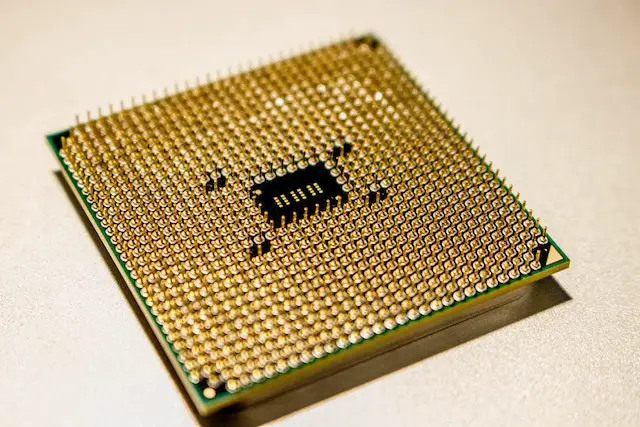Theme:
- Taiwan’s semiconductor manufacturer Foxconn partnered with Vedanta to build a semiconductor plant in Gujarat and start semiconductor chip manufacturing in India as early as 2025. The joint venture was signed in September 2022.
What is a semiconductor chip?:
- Semiconductors are materials which have a conductivity between conductors and insulators. Semiconductors are how electronic devices process, store and receive information. For instance, memory chips store data and software as binary code, digital chips manipulate the data based on the software instructions, and wireless chips receive data from high-frequency radio transmitters and convert them into electrical signals. These different chips work together under the control of software. Different software applications perform very different tasks, but they all work by switching the transistors that control the current.
Importance of Semiconductors:
- Every major electronic device has a semiconductor inside it to make it work. They are critically important for the Information and Communication Technology industry.
- The demand for semiconductors is increasing, and current semiconductor plants are unable to meet this demand.
- According to government data, as of 2022, India imports 94 percent of its electronics and 100 percent of its semiconductors.
- India imported a huge amount of $54.87 billion value of semiconductors in 2021. It is estimated to touch $100 billion by 2025.
Government Initiatives in India:
- The Scheme for Promotion of Manufacturing of Electronic Components and Semiconductors (SPECS) has also been launched in India to encourage the production of semiconductors and electronic components.
- The Design Linked Incentive (DLI) Scheme provides financial incentives and design infrastructure support at different phases of semiconductor design development.
- The scheme for setting up Semiconductor fabs in India provides fiscal support to eligible applicants for setting up Semiconductor wafer fabrication facilities in the country.
- In December 2021, the Indian government has approved Rs. 76,000 crores ($10 billion) production linked incentive (PLI) scheme to attract semiconductor and display manufacturers. India wants to achieve self-reliance in semiconductor development. Moreover, it is aiming to become a global semiconductor hub. India announced the setting up of a specialized and independent “India Semiconductor Mission (ISM)” to develop a sustainable semiconductor and display ecosystem. But the Russia-Ukraine war created a scarcity of raw materials such as neon gas and palladium, which are used in semiconductor manufacturing. So, this may delay India’s semiconductor dream.
Challenges:
- Manufacturing semiconductors is a highly sophisticated industry that requires significant capital investments.
- As of now, India does not have any semiconductor fabrication plants that cater to private demand, despite having the required talent to design chips.
- Both the ISRO and the DRDO have their own fabrication foundries, however, they are primarily used for their own needs and are not the most advanced in the world.
- In addition to being incredibly expensive to manufacture, semiconductor chips require a large amount of clean water, a lot of land, and a highly skilled workforce for their manufacturing.
- China’s threat of attack on Taiwan, which produces 65% of the world’s semiconductors and almost 90% of the advanced chips, is a concern for India as it will create a scarcity of semiconductors in the market.
Conclusion:
The global semiconductor market is projected to grow from $573.44 billion in 2022 to $1,380.79 billion by 2029. India itself will consume about $100 billion by 2025. Just as India is dependent on other countries for its crude oil needs, it cannot stay dependent on its semiconductor needs as well. India has a growing IT industry as well as skilled manpower, which can help India become self-reliant in semiconductors and perhaps also cater to global demand. But it will require the government and the industry to work together to put robust policy mechanisms and ecosystems in place.
Photo by Jeremy Waterhouse
Your turn…
What are your thoughts on this topic? Express your point of view through the comment section below. And subscribe to our blog to read answers to the trending GD topics.
Copyright @ Group Discussion Ideas.

